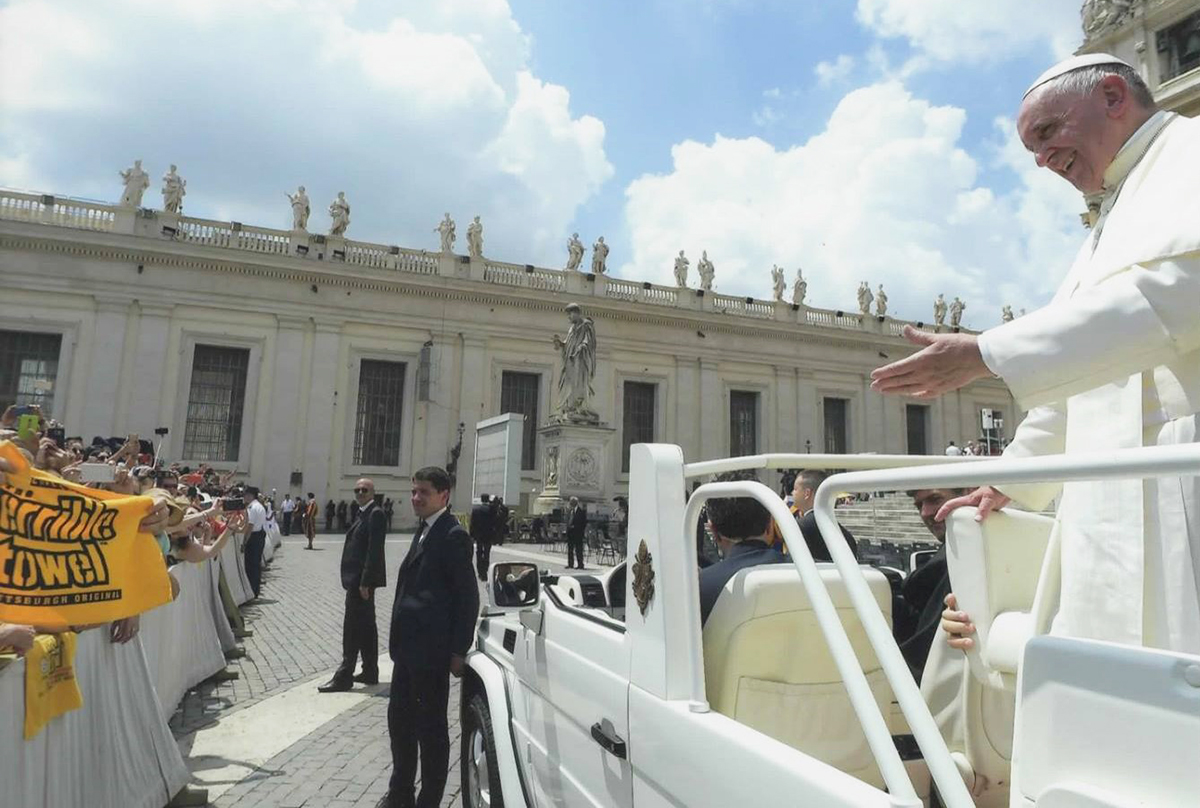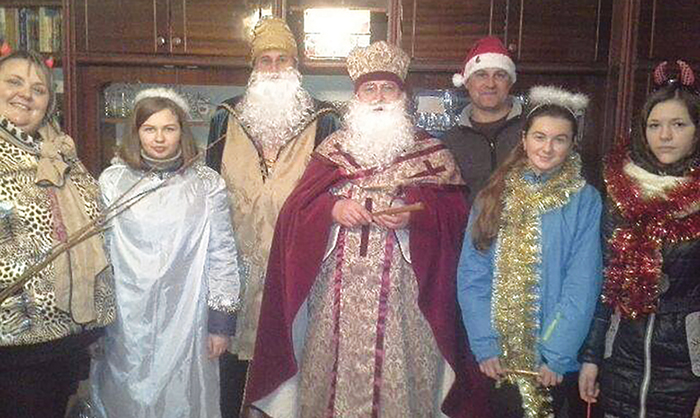Our Blog
Spiritual December Report

Traditions & Customs
Dear Friends:
As many of you know, part of my childhood, growing up was in what we call “staryj kraj-old country.” It was there that I was given the opportunity to learn, understand, and embrace all our venerable traditions and customs.
What comes to mind when you hear those words “traditions” or “customs”? Well, I must say that even in Pittsburgh we have traditions that make our city unique (and I mean it).
Attending wedding receptions in Southwestern Pennsylvania you admire our cookie tables which are a cherished Steel City tradition that spans generations. For many individuals and families attending “First Night” to welcome the New Year has become an annual tradition, or when most amusement parks close down when the weather turns cold, many people have the tradition of going to Kennywood, which stays open for its annual Holiday Lights event. And who cannot admire the tradition of the “Terrible Towel” in action. Since 1975, thousands of fans swing that Terrible Towel as a rallying cry at Pittsburgh Steeler games but also a sign of being a true Pittsburgher. These are the traditions that I have embraced and learned to love for over 25 years.
But what about our venerable traditions and customs that we have had for centuries in our Byzantine Catholic Church. Do we know them? Do we understand them?
In our Holy Church, Holy Tradition is the deposit of faith given by Jesus Christ to the Apostles and passed on in the Church from one generation to the next without addition, alteration or subtraction. That means nothing gets added, nothing gets changed, and nothing gets removed. The theologian Vladimir Lossky famously described Tradition as “the life of the Holy Spirit in the Church.” It is dynamic in its application, but unchanging in its doctrine. It is growing in expression, yet always the same in its essential meaning.
Alongside Holy Tradition, we also have various customs that help us to express the Holy Tradition—these are things like how certain feast days are celebrated, the exact nature of fasting rules, or details of the Church calendar. These things can change over time, and they have in the life of our Byzantine Catholic Church, and that’s okay. What’s important is that the Holy Tradition given by Jesus Christ remains the same.
In several of our parishes till this very day we enjoy the St. Nicholas visit. In the old country, St. Nicholas on his feast day traditionally goes from house to house in the village with his “helpers”. Who are these helpers? His close helpers are the angels, but somewhere in the background you would also see the little devils trying their best to cause trouble for the children of the household. I remember as a child I was always afraid of the “devil” until I recognized one of my cousins playing that role. As part of the St. Nicholas visit he would ask you if you know your prayers, if you help around the house, or if you are good in school, and then you would receive your small gift—great memories.
Growing up Byzantine Catholic, fasting played an important role in our family. As part of our preparation for “Velija”, that is the Christmas Eve Holy Supper for years we had to get the live “kapor-carp”. This is something I enjoyed as a boy. My sister usually freaked out walking into the bathroom and seeing the live carp in our bathtub! I took upon myself to even feed the hungry fish, knowing well what’s going to happen on Christmas Eve. Nowadays I’m satisfied with a well-prepared tilapia.
Velija – Holy Supper was a sacred time for us. Waking up in the morning with the aroma of mushrooms, cabbage, pots boiling on the oven, all these family traditions that for generations keep Christ at the center of Christmas. Then, with the appearance of the first star sitting down at the table (with hay underneath), reading the Nativity Gospel narrative, offering prayers, singing Christmas carols and enjoying the Holy Supper that consisted of twelve meatless dishes representing the twelve Apostles. The only part I always struggled with was the garlic. Until this day I just can’t do the garlic.
Friends, for centuries our Holy Church has given us a beautiful tapestry of Christmas traditions/customs which point to Christ. This time of the year I urge you to keep them alive in your household and in your parish family. If you are not familiar with these traditions/customs maybe it’s time for a workshop in your parish. If you visit the GCU Website and select the About GCU tab you will see at the top of the list History & Heritage. Click on this and go to the bottom of the page there is a copy of a flier about Christmas Eve traditions as well as one for preparing a traditional Easter Basker for Blessing.
It is awesome that we do have our traditions/customs, but do we understand them? Simply mimicking what people of the past did isn’t enough. We need to internalize them and make them part of who we are as Byzantine Catholics. Understanding why we keep certain traditions/customs, and how it is that they have led people in the past to God, and how they can lead us closer to God today, is absolutely essential to our faith. My friends, keep our traditions - customs alive!
This year, as we look up at the Star of Bethlehem with hope for our future, we join our brothers and sisters worldwide singing those words: “God is with us! Understand, all you nations, and submit yourselves, for God is with us!”
I thank you for your love and prayers. Let us hold one another in our prayers, especially our brothers and sisters in the Middle East and Ukraine. May our Lord Jesus Christ, born in Bethlehem, bless you, your families, and loved ones at this blessed time of hope and grace.
Christ is born! Glorify Him!
Christos Raždajetsja! Slavite jeho!
Fr. Valerian M. Michlik | GCU Spiritual Advisor




